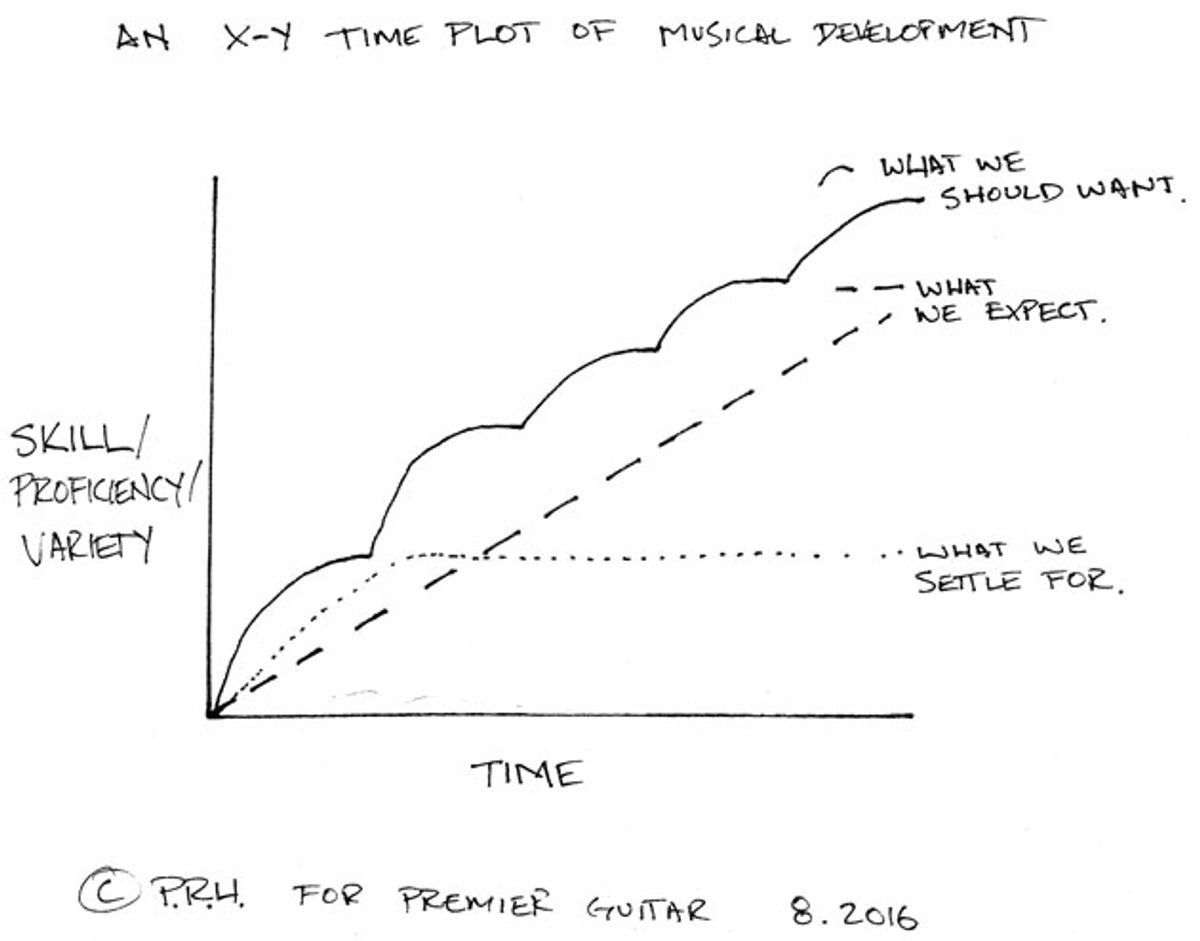
With electric guitar, tone is as important as content.
By the time you read this, election season will nearly be over. Your social media feed will have gone from infuriating to entertaining, as the algorithms figure out which side you’re on and cultivate a soothing stream of preferable information and easy laughs at your opponents. You’ll have tuned out that crazy relative you don’t agree with while forwarding and sharing all the stuff your like-minded buddies will appreciate. By the time November comes around, you’ll wonder how anyone could be voting for the other side, as you’ll hardly ever see or know anyone who does.
In a lot of ways, we don’t even need the computers to do this much work for us. Confirmation bias results from our tendency to retain information favorable to our beliefs and discard information that isn’t. When we wish for something to be true, we only collect evidence that fits our beliefs, while ignoring information that could challenge the premises we’ve cherry-picked to fit our preferred conclusions.
I once had a fascinating exchange with a young guitar player who insisted that he had all the gear he would ever need. He was using a guitar with single-coil pickups, a couple of low-gain drives, multifunction delay and reverb units, and a clean amp. He told me of his intention to seriously pursue a career as a performing musician who could also pick up session work in a studio. Perhaps within his frame of reference, he was correct. He had the gear of the artists and genre that he admired. He’d observed what his heroes used, how they sounded, and what it took to get there—and he’d acquired the tools to replicate those outcomes. Premise: I’ll only need to do this. Conclusion: This is all I’ll ever need.
I just shook my head, because, when I saw his setup, his notion of a session recording musician seemed laughable. I recalled being asked by different producers for all manner of sounds that such a basic setup simply couldn’t do. Need to play like Skip Pitts in “Theme from Shaft?” You better have a wah (and one with a clean potentiometer). Get asked for a “Run Through the Jungle” part? You’ll need tremolo, for a start. Those Jerry Garcia “squawking” sounds require an envelope filter. Those cracked-speaker Beatles leads will demand a spitty fuzz.
“Something like a slow Hendrix feel” means getting a Uni-Vibe warmed up. That “Rage Against the Machine siren-y thing” requires having a Whammy in your backpack. “An ’80s rockish thing” means you better get Van Halen sounds with some hard-clipped distortion. And when they ask for some “whoosh” or “swirl,” you might need a take or two to figure out if they’re asking for “Have a Cigar” phasing or Andy Summers chorus/flanging.
I bring all these examples up to point out how essential these distinctive sounds are to these kinds of performances. I had the pleasure of meeting Jacques Charbit from Jacques Stompboxes at his shop in Marseilles years ago. He chatted with me very persuasively about his take that tone is as important as content with regards to electric guitar. If you hand a classical piece to a classically trained pianist, one could reasonably expect to hear a quality rendition of the work that conforms to expectations. But if you ask someone to play something like “Foxy Lady” on an electric guitar without loads of unruly fuzzy greatness, they might as well be playing it on a ukulele.
Those effected sounds are as vital and evocative to our ears as the notes and arrangements. We can only imagine how important they were to the writers and players. When you hear “Mayonaise,” you can hear Billy Corgan and James Iha almost playing across the phasing. Check out the way Jack White seems to stiffen his delivery on “Little Cream Soda” to conform to the glitchy harmonized output of his pitch shifter. Find a live version of “Bridge of Sighs” to hear how the throb of the Uni-Vibe seems to not only affect Robin Trower’s parts, but the sway of his bandmates rolling behind the beat in the rhythm section. Those are effects that do more than change the sound; they have also changed the content, and that content simply wouldn’t be the same without them.
We all can look at what we already have and like, and tell ourselves over and over again that it’s exactly what we need. But in the spirit of fighting confirmation bias, try seeking out evidence that’s contrary to those beliefs. Be on the lookout for sounds in songs you enjoy that you currently cannot achieve, listen to challenging music outside of your preferences, and give yourself the chance to pursue those sounds and awaken something previously unheard in your own playing. There’s a world full of music out there made with gadgets that are designed to make sounds you simply cannot create otherwise. Put them to use.

